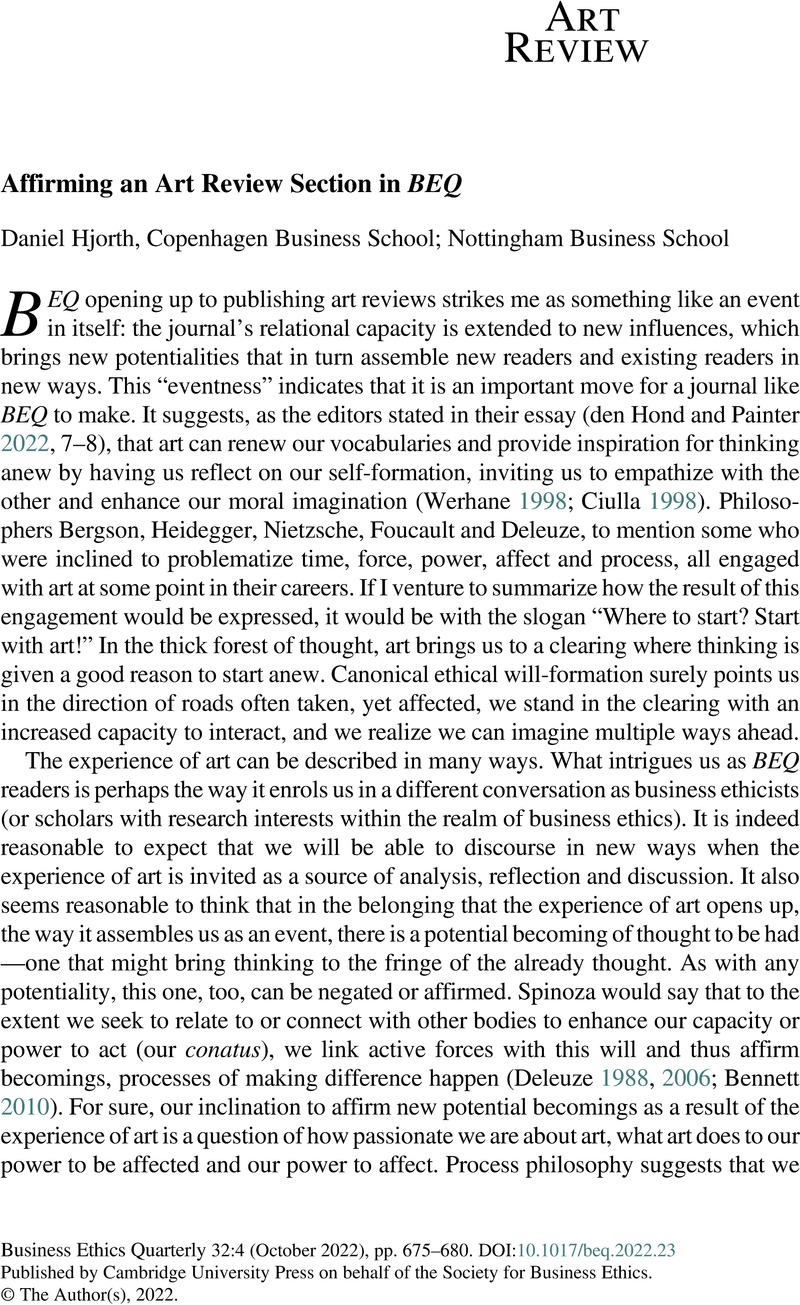Crossref Citations
This article has been cited by the following publications. This list is generated based on data provided by Crossref.
Bîzoi, Alexandra-Codruța
and
Bîzoi, Cristian-Gabriel
2025.
Enhancing economics education: the impact of upside-down drawing exercises on cognitive and analytical skills.
Humanities and Social Sciences Communications,
Vol. 12,
Issue. 1,
Gasparin, Marta
Hjorth, Daniel
and
Raviola, Elena
2025.
Media Review: Crafting Traditions and Speculative Imaginaries Atmospheres of CraftPalazzo Sturm, Bassano del Grappa, Italy, 27/05 to 30/06/2023, created and curated by D20 (MarchesiniSergioRiviRaffaella)SemblanceRöhsska Museum of Design and Craft, Gothenburg, Sweden, 2/05 to 10/05/2024, curated by KettleAliceJensenJokum LindCurranRobBrave New WorldA travelling exhibition held in Dals Långed (Sweden), Bornholm (Denmark) and Venice (Italy) since May 2024, and will be held in Bologna (Italy) in 2025, created and curated by D20.
Organization Studies,
Vol. 46,
Issue. 4,
p.
604.



